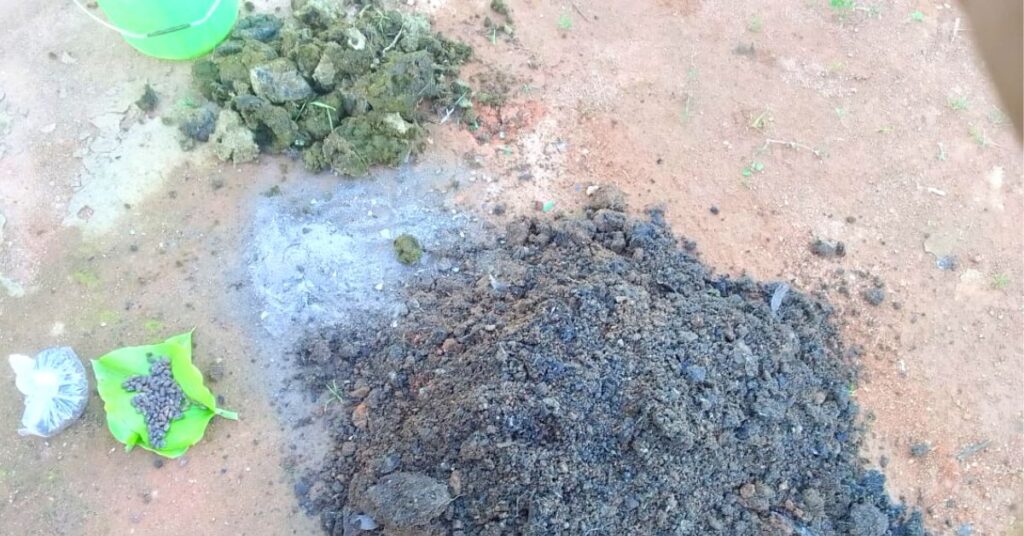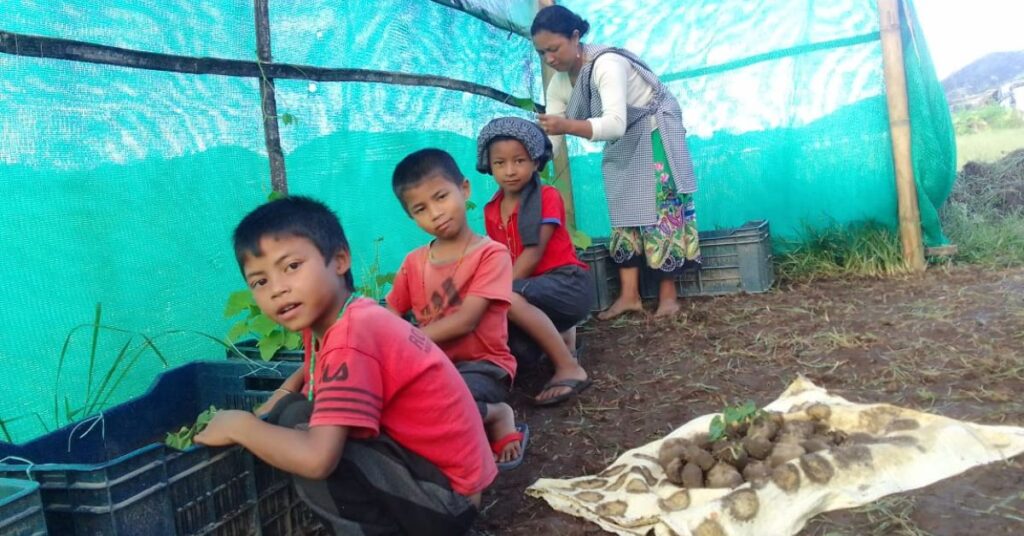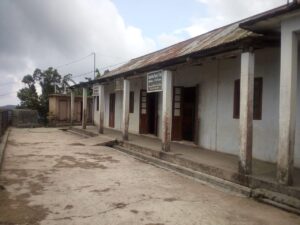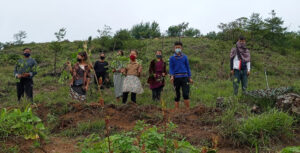For farmers, seeding and transplanting crops constitute some of the most crucial stages of farming. It is during seeding and transplantation that the utmost care for the seeds and saplings has to be given in order for the crop to be successful. In such times, pests, birds, and other natural factors such as heavy rain can lead to damaging the seeds as well as destroy the nursery pad and ultimately affect the crops’ yield for the season.
The same issues that plague many farmers worldwide were also the pressing issues for the predominantly farming community members of Jaud in East Khasi Hills who cultivate crops such as beans, maize, mustard leaves, rice, and sweet potatoes.
“Often in our village, during rainy seasons, the plant seeds get mostly carried out by the rain”, says Aiwanbok Marbaniang, one of the farmers from the Jaud community. Aidamery Marbaniang, another farmer, confesses that most of the farmers from the community once relied on pesticides to stop seeds and saplings from getting attacked by pests.
However, for the Jaud community, the solution to both the pressing problems came in the form of a simple farming hack (making seed balls) that has today revolutionized how the community farmers grow crops on their land.
It was through the Social Service Centre (SSC) that the community members were first taught to pick up the simple yet efficient method of seeding and transplanting “The Seed Ball Initiative” in a technical training as part of the NESFAS project “Empowering indigenous communities through Agroecology Learning Circles (ALCs) for resilient, integrated and innovative natural resource management”, which is supported by the MBMA and funded by the World Bank.

The seed ball is a ball made out of a thorough mix of soil manure, ash, and cow dung, shaped into a round sphere. Inside the sphere, a small hole is made where the seeds of the farmer’s choice can be planted. Once the seed is placed inside the ball, the seed ball is kept in nurseries or plastic tomato crates until the seeds germinate and start sprouting. With the fertile ball acting as an incubator for the seeds, there is no need for fertilizers or pesticides to grow the crops. Once the saplings are big enough, farmers take these seedlings along with the seed balls and transplant them in the garden or fields. The non-disturbance to the root structure of these saplings increases the success rate of these crops to grow healthily even after transplantation. These seed ball saplings can also be easily grown in tomato crates or fish crates in places where open land for farming is limited.
Aiwanbok Marbaniang relayed that the seed ball initiative has been very helpful to farmers in preventing seeds and crop saplings from being washed away by the rain. Aidamery Marbaniang believes that the seed ball initiative provides a huge opportunity for the farmers to start growing crops without the use of pesticides and fertilizers and instead opt for a fully organic system of farming.

Currently, 12 out of the 18 members of the ALC from the Jaud community are involved in making seed balls and there is huge optimism that the community members are already seeing the benefits of the novel initiative. The farmers are also experimenting with growing different types of crop plants to see which crops grow best in the seed balls and which crops have the highest rate of success after transplantation.
“If we are willing to work diligently and start with small things, we (farmers) get many opportunities. Just as all things need time and patience, this seed ball initiative is just starting and we want whatever work we are doing to be sustained and not temporary,” said Pontilis Lyngdoh, ALC member, voicing the common goal of his fellow farmers to continue improving and practicing the seed ball method in the years to come.



